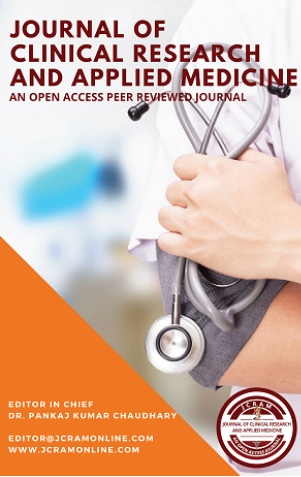Evaluation of Nested broad-range PCR for Pathogen Detection in Negative Blood Cultures
DOI:
https://doi.org/10.5530/jcram.2.2.11Keywords:
Bloodstream infection (BSI), NAAT, Blood culture, broad-range PCRAbstract
Background: Bloodstream infections are a major cause of morbidity and mortality among all age groups. In the laboratory, it is routinely diagnosed by performing a blood culture which is considered an imperfect gold standard. The diagnostic limitations and uncertainties of blood cultures are related to low sensitivity, particularly in antibiotic-exposed cases, and extended time for pathogen detection that increases turn-around-time of the results. An alternative and recently introduced nucleic acid amplification method for 16S rDNA, a conserved DNA sequence common to all bacteria, has gained significant. It has high sensitivity and an ability to detect organisms that are non-cultivable or nonviable owing to prior antibiotic treatment and where the organism fails to grow on a culture medium. Objectives: To determine the utility of broad-range PCR in the detection of pathogens from negative blood culture was the aim of our study. Materials and Methods: A total of 50 negative blood cultures after 5 days of incubation on BacT/Alert continuously monitored blood culture system were included in this study. From each blood broth sample, DNA was isolated which was subjected to a broad range 16S rDNA nested PCR. The PCR products obtained were visualized on agarose gel electrophoresis and the results were interpreted. Results: Broad range bacterial 16S rDNA nested PCR detected the desired amplicon in 4/50 (8%) of the blood culture-negative samples. Conclusion: The broad range bacterial nested PCR method if used in combination with routine culture techniques in clinical microbiology laboratories will increase the detection of Bloodstream pathogens.

Downloads
Published
How to Cite
Issue
Section
License
JCRAM and its contents are licensed under a Creative Commons Attribution-Non Commercial-No Derivs 4.0 License. Permissions beyond the scope of this license may be available with editor@jcramonline.com






